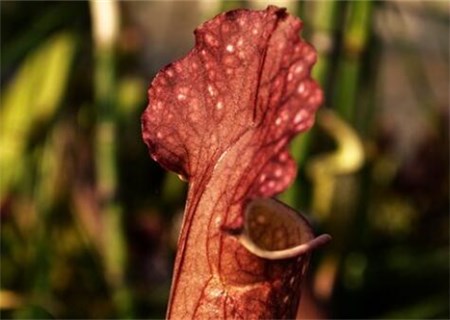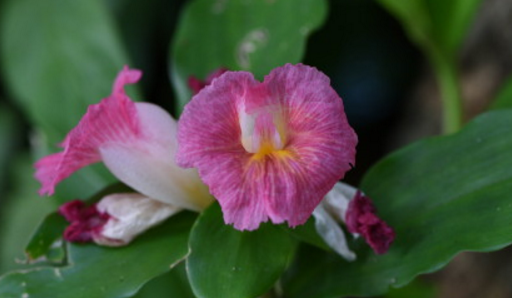What are the seed planting methods of artichoke (Jerusalem artichoke)? What are the planting prospects? When will it be planted?
Alpinia officinarum is an annual herb of the genus sunflower of Compositae. The ginger is fed by underground tubers. There are sporadic cultivation in various parts of our city, so do you know what are the planting methods of ginger seeds? What are the planting prospects? When will it be planted? In a farmer who grows ginger all the year round, we know that ginger is sown in spring. Hole sowing or gully sowing is used.

What are the planting methods of ginger seeds
1. Growth habits of alpinia officinalis.
Alpinia officinalis is native to North America and was introduced into China through Europe. Now it is cultivated in most parts of China. It is resistant to cold and drought, and the tuber can survive the winter safely in the permafrost of-30 ℃. The seedlings in early spring can tolerate light frost, and the mature leaves in autumn can tolerate short-term-4 minutes 5 ℃. The temperate zone was 18-22 ℃ and light for 12 hours was beneficial to tuber formation. Resistance to barren, soil requirements are not strict, in addition to acid soil, swamps and saline-alkali areas are not suitable for planting, some are not suitable for planting other crops of land, such as ruins, house side, roadside can grow.
2. Propagation methods of alpinia officinalis
After thawing in spring, the tuber weighing 20g / mu was selected for sowing. The tuber seed per mu was 50kg, the plant row spacing was 0.5m, the sowing depth was 10cm / 20cm, and the seedlings emerged about 30 days after sowing. Alpinia officinalis is sown in one year, and there are tubers left in the soil after harvest, but it can no longer be sown the following year, but in order to distribute the plants evenly, the seedlings should be thinned in the places where the plants are too dense, and the plants should be replanted in the places where the plants are missing.
3. Cultivation techniques of alpinia officinalis.
① weeding: after the emergence of ginger, it is necessary to replenish the seedlings in time, combined with supplementary seedlings for one weed control. Mid-tillage weeding generally ploughing loose soil 30-40 days after sowing, with a depth of about 6 cm, combined with mid-tillage for weeding. The second intertillage was carried out before budding, combined with weeding to create good conditions for the growth and development of tubers. And combine with ploughing to cultivate soil, in the tuber expansion period to pick flowers and buds, in order to promote tuber expansion.
② fertilization: the soil was prepared after the ginger was harvested in autumn, 5000 kg of miscellaneous manure was applied per mu, 70% was scattered, and 30% was concentrated in ditch when sowing. In addition, 15 kg of potassium sulfate was applied and ploughed deeply for 30 cm. After ploughing, the bed was leveled for sowing. On the basis of sufficient basal fertilizer, fertilizer should be applied twice in the growing period, the first time around the end of May, 10 kg urea per mu to promote the seedlings to produce more new shoots. The second time in the early budding stage, 15 kg of potassium sulfate per mu was applied and watered later.
③ watering: seedling stage, jointing stage, budding stage and tuber expansion stage are the four key stages of watering. Generally, seedling water can be watered in the middle of April, jointing water in late May, bud water in the middle of August and tuber swelling water in the middle of October. Although the ginger is drought-resistant, it can greatly increase the yield when the soil moisture is sufficient.
2. What are the prospects for the planting of alpinia officinalis
The limited market demand does not mean that the prospect of the ginger market is not good:
1. Jerusalem artichoke tubers are rich in amino acids, sugars and vitamins, with white, crisp and tender texture, no peculiar smell, and can be eaten raw, fried, cooked or sliced. If pickled into pickles or made into preserved ginger, it has a unique flavor. Jerusalem artichoke is a kind of excellent raw material which is free from diseases and insect pests and pesticide pollution, and is suitable for making green food.
2. Jerusalem artichoke is rich in inulin. Inulin, fructo-oligosaccharide and ultra-high fructose syrup are refined from Jerusalem artichoke by modern biotechnology, which is one of the all-round products in the health food industry.
3. Fructose can be made into alcohol after fermentation, which is called green oil, which is not only a good alternative fuel, but also an ideal improver to increase the combustion quality of gasoline.
4. Jerusalem artichoke can be used medicinally, and its tuber taste is sweet and flat, non-toxic, diuresis and dehumidification, and can prevent and cure diabetes.
Among them, inulin has long become a popular functional food in the world, and the demand in overseas market is still greater than that in China. There are enterprises in Inner Mongolia, Qinghai, Gansu and other places in China. However, at present, the immaturity of deep processing technology is one of the most important reasons for restricting the domestic market of foreign ginger.
It is believed that with people's attention to health and the continuous development of Jerusalem artichoke deep processing technology, all kinds of related products will continue to increase, the demand will gradually expand, and the market prospect is still very promising.
Time: 2019-03-16 Click:
- Prev

Can pitcher plants, a tropical insectivorous plant, be raised indoors? How to survive the winter? How do you water it?
Pitcher plant is the general name of all species of pitcher plant. It has a unique nutrition organ pitcher cage, pitcher plant in Guangdong Sanling Mountain, Leizhou and other places have wild distribution, then do you know that pitcher plant can be raised indoors? How to survive the winter? How do you water it? Can pitcher plants be raised indoors?
- Next

Culture methods and matters needing attention of plantain order closed-sheathed ginger? How do you breed? What is the effect and effect?
Closed-sheathed ginger, alias is called Guangshang Lu, banana flowers, white head to old age, old mother crutches, so the breeding methods and points for attention of closed-sheathed ginger? How do you breed? What is the effect and effect? According to the data, the adaptability of closed-sheathed ginger is very strong and can grow in all kinds of soil.
Related
- Fuxing push coffee new agricultural production and marketing class: lack of small-scale processing plants
- Jujube rice field leisure farm deep ploughing Yilan for five years to create a space for organic food and play
- Nongyu Farm-A trial of organic papaya for brave women with advanced technology
- Four points for attention in the prevention and control of diseases and insect pests of edible fungi
- How to add nutrient solution to Edible Fungi
- Is there any good way to control edible fungus mites?
- Open Inoculation Technology of Edible Fungi
- Is there any clever way to use fertilizer for edible fungus in winter?
- What agents are used to kill the pathogens of edible fungi in the mushroom shed?
- Rapid drying of Edible Fungi

